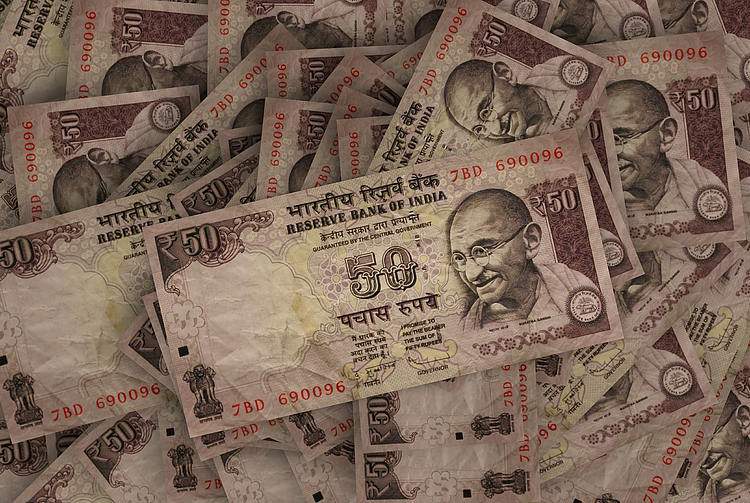- Gold price demonstrates a weak performance amid strength in the US Dollar.
- United States inflation grew at a 0.2% steady pace in July amid higher rentals.
- The Fed is expected to keep interest rates unchanged in September.
Gold price (XAU/USD) continues its bleak performance amid headwinds of a strong US Dollar and higher US Treasury bond yields. The precious metal remains under pressure as consumer and producer inflation grew modestly in July but failed to uplift chances of further policy tightening by the Federal Reserve (Fed).
The 0.2% monthly increase in the United States Consumer Price Index (CPI) in July is in line with the Fed’s required annual inflation rate of 2%, which keeps policymakers comfortable. The rise in consumer inflation, mainly driven by higher rentals, could allow the Fed to go light on interest rates and contribute to easing recession fears. This week, Gold price action will likely be guided by the US Retail Sales data for July, which will be published on Tuesday at 12:30 GMT.
Daily Digest Market Movers: Gold price declines as US Dollar shines
- Gold price seems to be declining toward the crucial support of $1,900 amid sheer strength in the US Dollar despite the fact that the Federal Reserve is expected to keep interest rates unchanged in September.
- The US Dollar Index (DXY) refreshes its five-week high around 103.00 as the market mood remains cautious after US equities turned expensive.
- Gold price also remains under pressure due to higher US bond yields, with 10-year US Treasury yields hovering around 4.16%.
- In July, both US consumer and producer inflation rebounded despite restrictive monetary policy and tight credit conditions by US commercial banks.
- Despite the rebound, US consumer inflation grew at a slower-than-expected pace as higher rentals were offset by a decline in the cost of second-hand automobiles.
- Around 90% of the contribution to inflation was driven by higher shelter prices. This indicates that the Fed doesn’t need to raise interest rates further as prices of durables and non-durables are still declining.
- No more interest rate hikes clearly recedes fears of a recession in the United States.
- US Producer Price Index (PPI) rose 0.3% in July on month, higher than expectations of 0.2%, as the cost of services rebounded at the fastest pace in nearly a year. The Department of Labor reported that goods prices excluding oil and food prices remained unchanged.
- In spite of a rebound in US CPI and PPI, keeping interest rates on hold is likely to be considered by Fed policymakers as July’s monthly inflation pace aligns with the Fed’s desired rate of 2%.
- Consumer inflation expectations for the next five years softened to 2.9% in August, less than expectations and the former forecast of 3.0% as the central bank is expected to keep interest rates elevated for a longer period, according to data from the University of Michigan Consumer Sentiment survey.
- Meanwhile, the preliminary Michigan Consumer Sentiment index slipped to 71.2 from 71.6 in July but remained above the forecast of 71.0.
- “In general, consumers perceived few material differences in the economic environment from last month, but they saw substantial improvements relative to just three months ago,” said Joanne Hsu, director of the University of Michigan’s surveys.
- After the Fed’s inflation data, investors shift their focus towards the US Retail Sales data for July. Retail sales are seen expanding by 0.4% in July, accelerating from the 0.2% increase recorded for June. A similar performance is expected for retail sales excluding autos.
Technical Analysis: Gold price hits fresh five-week low
Gold price declines consistently and is expected to test the round-level support of $1,900.00. The precious metal falls sharply as the 20- and 50-day Exponential Moving Averages (EMAs) delivered a bearish crossover. The Relative Strength Index (RSI) (14) slips below 40.00. The absence of divergence and oversold signals in the RSI (14) suggest more weakness ahead. Gold price forms consecutive Inverted Hammer candlesticks. A breakdown below the $1,910.00 support might trigger a fresh sell-off.
Interest rates FAQs
Interest rates are charged by financial institutions on loans to borrowers and are paid as interest to savers and depositors. They are influenced by base lending rates, which are set by central banks in response to changes in the economy. Central banks normally have a mandate to ensure price stability, which in most cases means targeting a core inflation rate of around 2%.
If inflation falls below target the central bank may cut base lending rates, with a view to stimulating lending and boosting the economy. If inflation rises substantially above 2% it normally results in the central bank raising base lending rates in an attempt to lower inflation.
Higher interest rates generally help strengthen a country’s currency as they make it a more attractive place for global investors to park their money.
Higher interest rates overall weigh on the price of Gold because they increase the opportunity cost of holding Gold instead of investing in an interest-bearing asset or placing cash in the bank.
If interest rates are high that usually pushes up the price of the US Dollar (USD), and since Gold is priced in Dollars, this has the effect of lowering the price of Gold.
The Fed funds rate is the overnight rate at which US banks lend to each other. It is the oft-quoted headline rate set by the Federal Reserve at its FOMC meetings. It is set as a range, for example 4.75%-5.00%, though the upper limit (in that case 5.00%) is the quoted figure.
Market expectations for future Fed funds rate are tracked by the CME FedWatch tool, which shapes how many financial markets behave in anticipation of future Federal Reserve monetary policy decisions.













